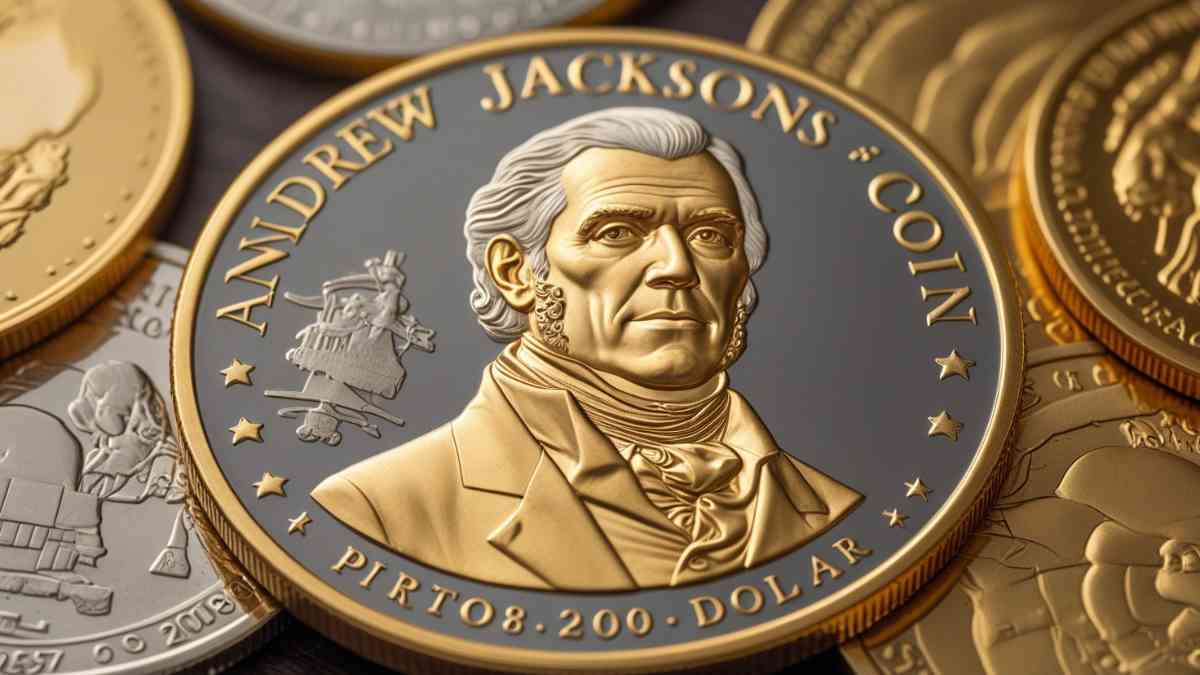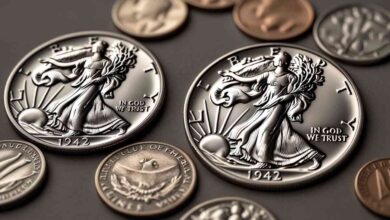Andrew Jackson Dollar Coin: History, Value & Collector Insights

The Andrew Jackson Dollar Coin holds a unique place in the world of U.S. numismatics. Introduced in 2008, it pays tribute to the nation’s seventh president and is part of the U.S. Mint’s larger initiative to honor presidents through the Presidential $1 Coin Program. While not widely used in everyday transactions, the coin has become a cherished collectible, offering both historical significance and aesthetic appeal.
What is the Andrew Jackson Dollar Coin?
The Andrew Jackson dollar coin is a golden-colored $1 coin issued by the United States Mint in 2008. It features a portrait of President Andrew Jackson, who served from 1829 to 1837, and is the seventh release in the Presidential $1 Coin Program. The program began in 2007 and continued until 2016, honoring deceased presidents in the order they served.
The coin was never intended for general circulation in the same way as quarters or dimes. Instead, it was created to promote public interest in U.S. history and coin collecting, offering an artistic representation of each president.
Introduction and Historical Background
Andrew Jackson, a towering figure in 19th-century American politics, was known for his populist approach, military leadership, and controversial policies. His presidency marked a shift in political power from the elite to the common man. Jackson dismantled the Second Bank of the United States and signed the Indian Removal Act, decisions that continue to spark debate.
By featuring Jackson on the dollar coin, the U.S. Mint commemorated his complex legacy. His inclusion reflects both his influence on the presidency and his symbolic role in shaping American democracy.
Design Features and Technical Details
The obverse (front) of the coin showcases a detailed portrait of Andrew Jackson. His name, order of presidency, and years in office are inscribed: “ANDREW JACKSON 7th PRESIDENT 1829-1837.”
On the reverse, like all Presidential $1 coins, is a rendition of the Statue of Liberty, symbolizing freedom and enlightenment. The reverse inscription reads “UNITED STATES OF AMERICA $1.”
A distinctive feature of this coin is its edge-lettering, which includes the phrases: “E PLURIBUS UNUM,” “IN GOD WE TRUST,” the year of minting (2008), and the mint mark (P, D, or S depending on the minting facility).
The coin is not made of real gold, despite its golden appearance. It is minted from a manganese-brass alloy over a copper core. It measures 26.5 mm in diameter and weighs 8.1 grams.
Circulation and Usage
Although the coin is legal tender, it was never popular in daily commerce. Many Americans were unfamiliar with using $1 coins, and the series never achieved widespread circulation. However, they were actively produced for collectors and are available through official U.S. Mint sets.
The Andrew Jackson dollar was minted at both the Philadelphia (P) and Denver (D) mints. The San Francisco (S) mint produced proof versions for collectors.
Why Collect the Andrew Jackson Coin?
One of the biggest appeals of this coin lies in its historical value. It connects collectors to the early 19th century and to a president who left an indelible mark on the U.S. political landscape.
From a numismatic perspective, it is part of a complete 39-coin set, ranging from George Washington to Ronald Reagan. Collectors often seek to gather the full series, and missing one would make a collection feel incomplete.
Additionally, coins that are uncirculated or have proof finishes hold greater value. Some coins even carry a premium if they feature edge-lettering errors or are in mint state (MS) 65 or higher.
Current Market Value
As of 2025, the standard circulated Andrew Jackson coin is still worth face value ($1). However, values increase for coins in pristine condition or with unique traits. Here’s a general idea:
- Circulated: $1
- Uncirculated (MS 65 or higher): $3 to $5
- Proof Coins (S Mint): $4 to $7
- Error Coins (missing or doubled edge lettering): $50 to $200+
It’s important to understand that these coins are not rare in a general sense, but certain mint errors or top-condition coins are considerably more valuable.
Coin Grading and Authenticity
Professional coin grading services such as PCGS (Professional Coin Grading Service) and NGC (Numismatic Guaranty Corporation) offer certifications and condition grades. The higher the grade, the more desirable the coin becomes to collectors.
Grades such as MS (Mint State) 65–70 are considered high quality. These coins are visually flawless under magnification and command higher prices.
How to Store and Protect Your Coin
Proper care is essential to maintain the coin’s appearance and value:
- Store in a cool, dry environment
- Use acid-free coin holders or plastic capsules
- Avoid touching the coin’s surface with bare hands
- Never attempt to clean a coin—cleaning can ruin its value
Investment Considerations
While not a high-yield investment, the Andrew Jackson coin can be a steady-value collectible, especially in pristine condition. It’s ideal for hobbyists, history lovers, or those looking to diversify their numismatic holdings.
The coin’s connection to a major historical figure, combined with its place in a limited-run series, makes it more appealing than many modern releases.
However, investors should manage expectations—this coin is best treated as a historical artifact and a collector’s piece rather than a get-rich investment.
Edge Lettering and Its Significance
One of the coin’s defining features is the lettering on its edge, a rare aspect in U.S. coinage. This includes the motto “IN GOD WE TRUST,” which initially sparked controversy for being on the edge rather than the front or back.
Later coins in the series moved this inscription to the obverse due to public feedback. This makes early edge-lettered coins like the Andrew Jackson edition more unique in the series timeline.
Little-Known Facts and Trivia
- The coin was only minted for one year (2008).
- It’s often mistaken for being made of gold due to its color.
- Error coins with missing or doubled edge inscriptions can fetch high prices.
- It can technically be used in vending machines or for purchases, though rarely accepted.
- Andrew Jackson is also featured on the $20 bill, making him one of the few figures to appear on multiple U.S. currencies.
Conclusion
The Andrew Jackson Dollar Coin serves as a tangible connection to one of America’s most pivotal presidents. Though its monetary worth may be modest, its symbolic and historical value is substantial. Whether you’re a beginner in coin collecting or a seasoned numismatist, adding this coin to your collection deepens your appreciation for American heritage and presidential history.
It reminds us that money isn’t just currency—it’s a story, a symbol, and a preserved moment in time.



